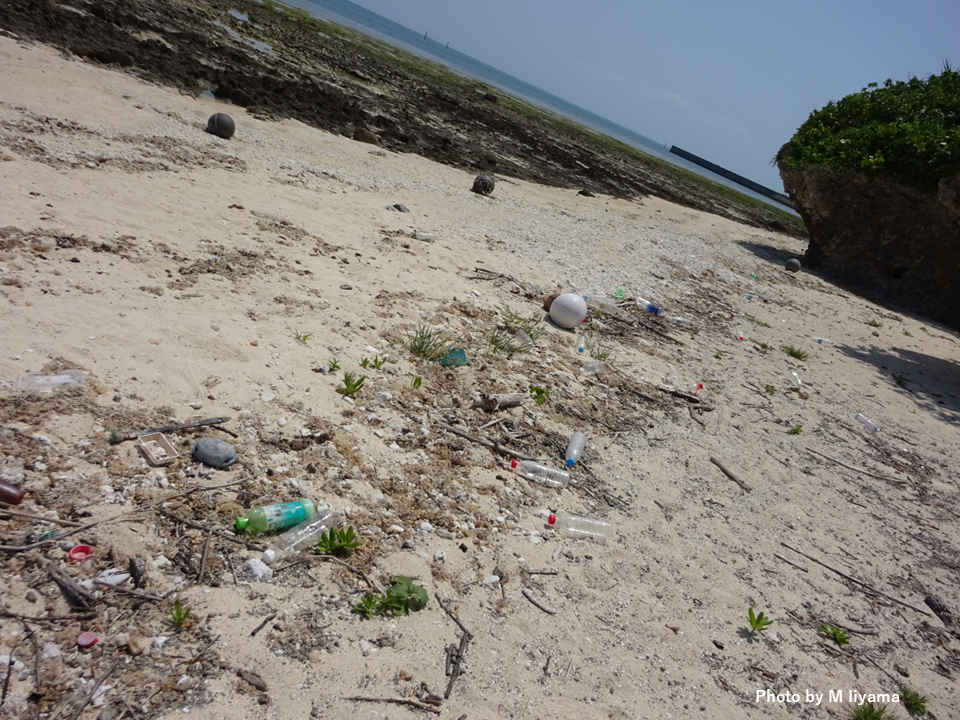Pick Up
785. Getting to the Root of Plastic Pollution

785. Getting to the Root of Plastic Pollution
Once hailed as a "miracle material," plastic has become a source of pollution due to our irresponsible use. Plastic pollution continues to outweigh the benefits of plastic use, with costs in terms of ecological loss, human health risks and climate instability.
Today, we are pleased to present the latest report from the United Nations Environment Programme (UNEP), Turning off the Tap: How the world can end plastic pollution and create a circular economy. Going beyond a diagnosis of the current state of plastic pollution, the report looks at the causes of pollution and proposes a comprehensive approach to changing the system of plastic production, use and disposal itself. This is expected to not only eliminate the sources of plastic pollution, but also transition to a circular economy that creates safer and more stable jobs and business opportunities. Citing previous research on plastic pollution reduction scenarios, the report calls for a system-wide shift to a circular model by accelerating three shifts: Reuse, Recycle, and Reorient and Diversify.
Shift 1:Reuse
Accelerate the market for reusable products and shift from a throwaway economy to a reuse society by developing a policy environment that encourages reuse. Studies estimate a 30% reduction in plastic pollution by 2040 through refills, bulk bottles, return systems and other reuse initiatives.
Shift 2:Recycle
Stabilizing plastic recycling and making it economically viable is expected to reduce plastic pollution by an additional 20% by 2040. To achieve this, it is important that sufficient recyclable materials are available and that recycled materials are price competitive with virgin products. This will require the elimination of fossil fuel subsidies, the development of recyclable products, and the improvement of the economics of recycled products through planning and guidelines.
Shift 3:Reorient and Diversity
Replacing plastics with paper products and biodegradable, sustainably produced alternatives is expected to reduce plastic pollution by 17% by 2040, but market competitiveness against new fossil fuel-based products will be a challenge due to cost, consumer demand, and availability of appropriate regulations.
UNEP projected that the transition of the entire plastics market to a circular economy would result in direct cost savings of US$1.27 trillion, with benefits expected to outweigh costs. The calculation shows an additional US$3.25 trillion in cost savings when secondary costs such as health, climate, air pollution, degradation of marine ecosystems and litigation costs are taken into account.
Pollution control is also expected to create 700,000 new jobs. The transition to a circular economy is expected to require more detailed sorting and collection of plastics, especially in low-income countries. The more labor-intensive the process, the more work will be done by people, which is expected to boost employment and improve people's livelihoods.
Needless to say, this is not a situation where kicking the can down the road is acceptable. A five-year delay in systemic change efforts could result in an additional 80 million metric tons of plastic pollution by 2040. An international policy agreement overcomes the limitations of national and corporate efforts and promotes a global circular economy for plastics by establishing a global financial framework to address plastic pollution, improve the market competitiveness of recycled products, create economies of scale for solutions, and establish monitoring and financing mechanisms, is expected to lead to increased business opportunities and the creation of new jobs.
Reference
United Nations Environment Programme (2023). Turning off the Tap. How the world can end plastic pollution and create a circular economy. Nairobi.
https://www.unep.org/resources/turning-off-tap-end-plastic-pollution-cr…
Contributors: Solongo TUMUR and IIYAMA Miyuki (Information Program)
